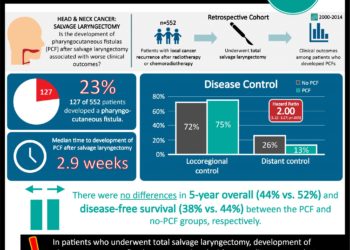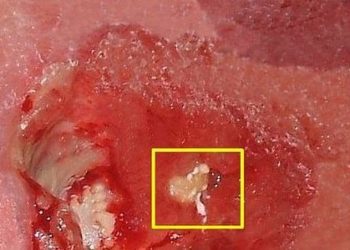Negative pressure wound therapy for open abdomens appears safe
[tabs tab1=”2MM Rundown” tab2= “2MM Full Report”]
[tab]
Image: PD
1. Risk of intestinal fistulation in open abdomens treated with negative pressure wound therapy (NPWT) is not statistically different than without such therapy.
2. Mortality in open abdomen patients treated with negative pressure wound therapy is not statistically different.
This independent study is the largest prospective study of open-abdomen management ever reported. Given the previous inconclusive evidence regarding the use of NPWT in open abdomens, this study helps allay concerns that use of NPWT could increase mortality or the risk of intestinal fistulation. The data in this study suggest that neither of those complications is more likely in NPWT, and, although not statistically significant at this sample size, the data suggest that mortality rate and intestinal fistulation may actually occur at a lower rate. The finding of NPWT patients having a reduced rate of delayed primary closure, while statistically significant, does not necessarily suggest that the relationship is causal. Given that the study did not collect enough variables to address whether there were failed attempts to close those abdomens, or if patients were left on NPWT as a more definitive therapy, there is no way of knowing exactly why there is a reduced rate. Strengths of this study are the large number of acute care centers involved, as well as the sample size. One limitation was that the study was not randomized. Also, although the authors did match the pairs across multiple variables, and tried to address for selection bias, it is impossible to know if there are unmeasured confounding factors.
Click to read the study in Annals of Surgery
[/tab]
[tab]
Image: PD
1. Risk of intestinal fistulation in open abdomens treated with negative pressure wound therapy (NPWT) is not statistically different than without such therapy.
2. Mortality in open abdomen patients treated with negative pressure wound therapy is not statistically different.
This [prospective] study included 578 patients in the United Kingdom who required surgery and were left with an open abdomen. They used a matched-pair cohort to compare various outcomes for open abdomen patients treated with negative pressure wound therapy (NPWT) vs. those not treated with it. The patients were culled from 105 different acute hospitals, with each hospital submitting information for a database on the patient data they had collected. Nearly 80% of patients had the abdomen left open after an emergency laparotomy. 398 (68.9%) patients in the U.K. were treated for abdominal sepsis as the preceding cause.
The relative risk of intestinal fistulation was 0.83 (95% CI: 0.44-1.58), relative risk of death was 0.87 (95% CI: 0.64-1.20), and relative risk of intestinal failure was 1.00 (95% CI: 0.64-1.57). The only statistically significant difference was found in the reduced rate of delayed primary closure, with a relative risk of 0.74 (95% CI: 0.6-0.9) with NPWT.
In sum: This independent study is the largest prospective study of open-abdomen management ever reported. Given the previous inconclusive evidence regarding the use of NPWT in open abdomens, this study helps allay concerns that use of NPWT could increase mortality or the risk of intestinal fistulation. The data in this study suggest that neither of those complications is more likely in NPWT, and, although not statistically significant at this sample size, the data suggest that mortality rate and intestinal fistulation may actually occur at a lower rate. The finding of NPWT patients having a reduced rate of delayed primary closure, while statistically significant, does not necessarily suggest that the relationship is causal. Given that the study did not collect enough variables to address whether there were failed attempts to close those abdomens, or if patients were left on NPWT as a more definitive therapy, there is no way of knowing exactly why there is a reduced rate. Strengths of this study are the large number of acute care centers involved, as well as the sample size. One limitation was that the study was not randomized. Also, although the authors did match the pairs across multiple variables, and tried to address for selection bias, it is impossible to know if there are unmeasured confounding factors.
Click to read the study in Annals of Surgery
By David Mattos and Allen Ho
© 2013 2minutemedicine.com. All rights reserved. No works may be reproduced without written consent from 2minutemedicine.com. Disclaimer: We present factual information directly from peer reviewed medical journals. No post should be construed as medical advice and is not intended as such by the authors or by 2minutemedicine.com. PLEASE SEE A HEALTHCARE PROVIDER IN YOUR AREA IF YOU SEEK MEDICAL ADVICE OF ANY SORT. Content is produced in accordance with fair use copyrights solely and strictly for the purpose of teaching, news and criticism. No benefit, monetary or otherwise, is realized by any participants or the owner of this domain.
[/tab]
[/tabs]






